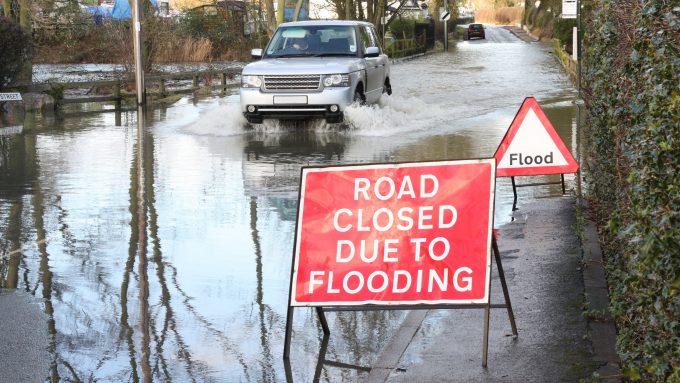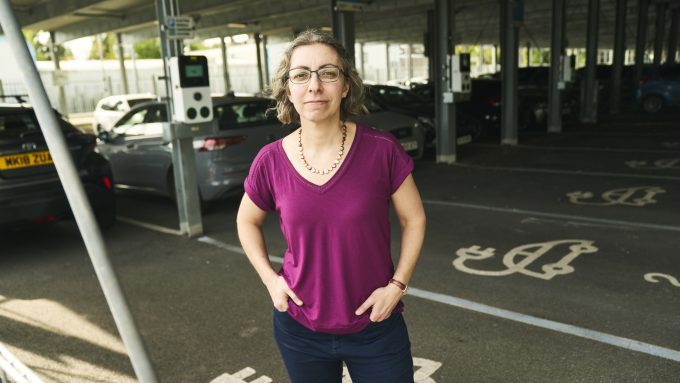
Meet the Academic striving to make transport safer for women and girls

What matters to you when thinking of taking a bus, train or tram? Perhaps it is the reliability of the service, convenience of a route, or the affordability of a ticket. For a lot of people weighing up their travel options – and especially men – that’s about the limit of the issues to consider.
But for many women, there is an added factor: how safe does the service or station feel to use? “This issue needs to be part of the transport discussion,” points out Andy Newton, a Professor of Criminology & Policing at Nottingham Trent University and one of Connected Places Catapult’s new Researchers in Residence. “Far too often, safety is merely an afterthought.”
Figures compiled by the Office for National Statistics show that nearly half of women feel ‘very or fairly unsafe’ using public transport on their own after dark, compared to just under a fifth of men. Eleven percent of females don’t feel safe travelling alone on public transport during the day either.
Several sections of last year’s ‘Opinions & Lifestyle Survey’ that relate to being out and about make for sober reading. But just how safe or otherwise is the UK’s transport network for women and girls?
One concern is an under-reporting of incidents on public transport, which masks the true scale of the problem of harassment and intimidation against women and girls.
“We know there are high levels of under-reporting, and part of the reason that women and girls don’t report incidents is because they think nothing will be done, or don’t know who or where to report it to,” Andy says. “There needs to be a good understanding of the problem, so we can try and do something about it.”Andy Newton, Professor of Criminology u0026amp; Policing at Nottingham Trent University
Gathering intelligence
Andy acknowledges that harassment on public transport is a complex issue to deal with. But one way to get a better handle of the problem may be to create a national database, documenting where and when females using public transport experience unpleasant incidents; starting with a local trial.
“A smartphone app could work, where users tap on a map and record an incident or report why a place makes them feel unsafe,” he explains. “But we want to provide as many ways to report an incident as possible. Without a database, we are working with bits of a jigsaw puzzle; trying to come up with solutions without seeing the full picture.
“We also need more people to understand why they need to report incidents. If you don’t report something, the police and transport operators may not consider there is a problem.”
He adds that the more data collected will mean patterns and trends can more easily be identified, showing where incidents are most frequent, and to allow for the impact of interventions to be monitored.
Andy says those responsible for safety in transport are “probably just starting to scratch the surface” of the scale of the problem of harassment against women and girls using public transport. But he is also keen to stress that “the risk is quite low” and is mindful that fear of intimidation could prevent some females from using public services.
He points out too that incidents on public transport – either on a service or at a station – sometimes continue beyond the transport environment, such as when a women walks home; which can make understanding the nature of the problem more difficult.
Andy recognises the potential of bystanders intervening if they see evidence of harassment; although he recognises that many well-intentioned people may be fearful of making a situation worse if they do, or become a target for abuse themselves.
“Transport for London has produced a series of posters pointing out what to look out for in terms of sexual harassment, which provides a good template for other operators to follow.”

An academic career focused on preventing crime
Andy Newton’s academic journey started as a geography student at the University of Sheffield. “I was very much interested in people and places, and the interaction between the two,” he explains. Andy later studied geographic information science for a Masters at Edinburgh University, where he learned of the importance of “bringing multiple layers of data together to try and understand places better”.
He went on to do a PhD in criminology at the University of Liverpool, which was funded by passenger transport executive Merseytravel, and became a research assistant at the university looking to better understand transport crime.
Andy explored whether there are parallels between burglary and crime committed on buses and trains. When a house is broken into, it is sometimes considered more likely that nearby properties will be burgled. He explored whether incidents on one transport route or mode led to more crime on services nearby.
“I remember police records suggesting that around seven bus shelters in Liverpool were smashed up a year, but I knew from my time at Merseytravel it was at least a couple of hundred. People don’t report these incidents – particularly on the bus network – as they don’t think it is serious enough, so the police didn’t know the scale of the problem.”Andy Newton, Professor of Criminology u0026amp; Policing at Nottingham Trent University
After five years he joined the University of Huddersfield as a research fellow, later senior research fellow, then reader, where he and his team “looked at crime in the same way that epidemiologists look at disease”. He worked to try and understand the interactions between place, people and crime, “and how we might be able to reduce opportunities for crime through design interventions, better place management or community initiatives”.
One stand out project was for the Home Office back in the mid 2000’s, exploring the possible impacts of a change to the licencing laws. With pubs about to be allowed to stay open after 11pm, and nightclubs after 2am, Andy considered what impact these changes could have on crime in town centres and the safety of people getting home. He also provided evidence to a Parliamentary Select Committee on Rail which looked into transport safety.
After 12 years, Andy joined Leicester University as an associate professor where he developed an interactive toolkit for DG Move – the European Union’s Directorate General for Mobility and Transport – to help operators reduce the chances of terrorism or serious violence taking place within large stations. Four years ago, he joined Nottingham Trent University and got involved in a project to reduce youth violence and better empower communities in local decision making that could reduce crime.
Last summer, he was promoted to the role of Professor of Criminology & Policing at the university where he also lectures and supervises several PhD students.

Creating a lasting impact
One major focus for Andy over the next year will be on his Researcher in Residence placement, which will call upon much of his 20 years of experience in looking at ways of reducing crime associated with transport.
“Connected Places Catapult has been really supportive and engaging, and is clearly motivated by this subject to improve transport safety for women and girls. It has many connections in the sector, and I will try to bring people together to discuss the issue.”
Andy’s long-term aims are for a better understanding of the problems and challenges of transport safety, a less fragmented system of reporting, and one where people can feel something can be done if they report a crime or concern.
“I want my research to have real impact, and not end up as a report sat on a bookshelf,” he adds. “If I can show that the work is making a difference, it will be very rewarding.”
A new round of the Researchers in Residence scheme has been launched. To be alerted about opportunities at Connected Places Catapult, join our Academic Network.





